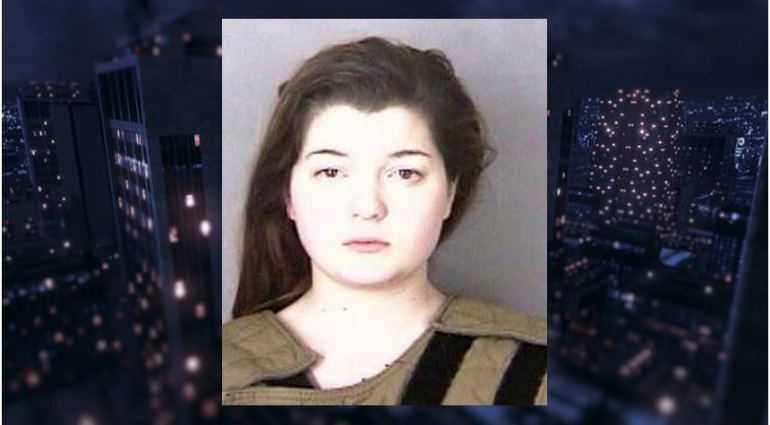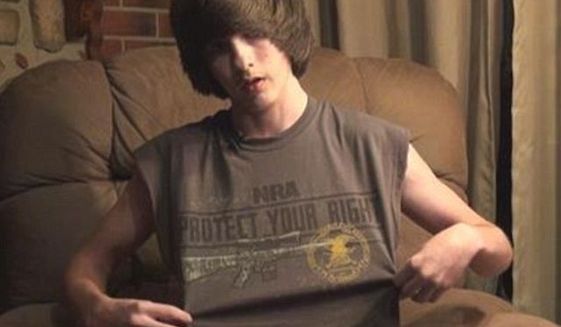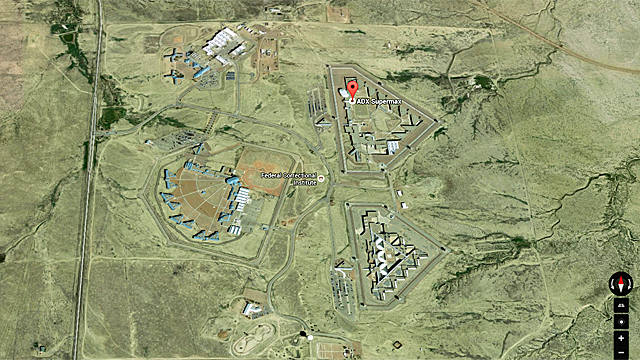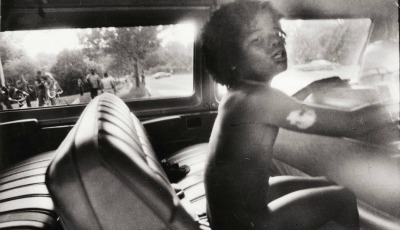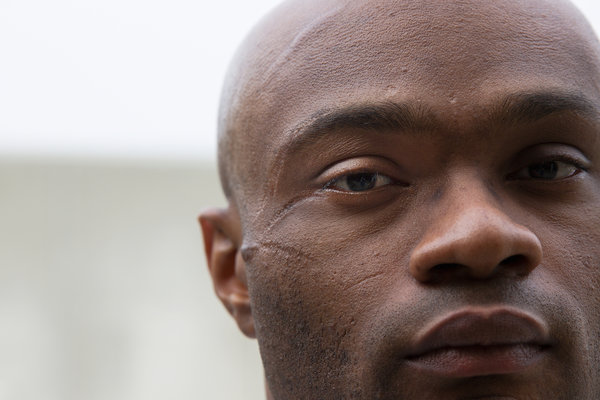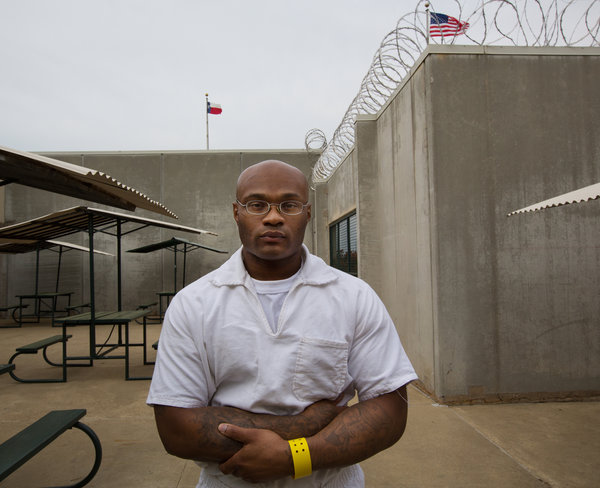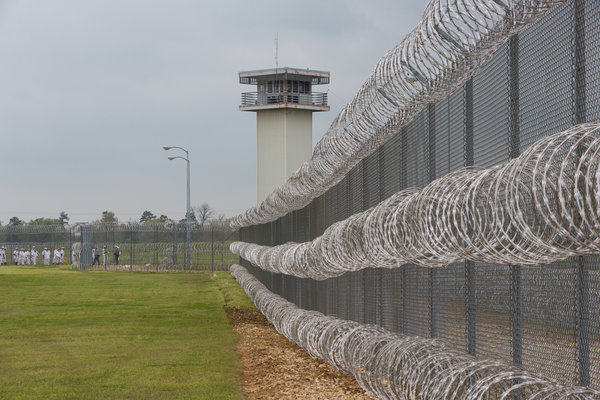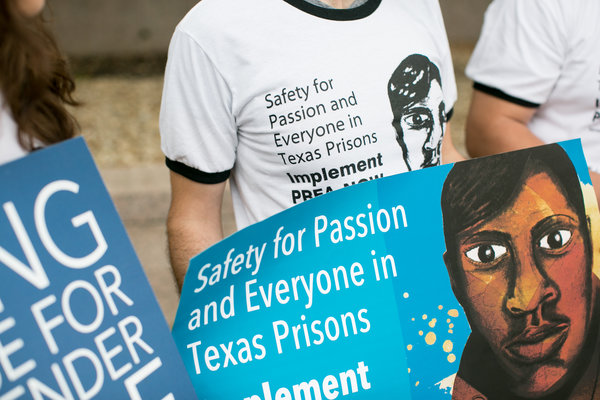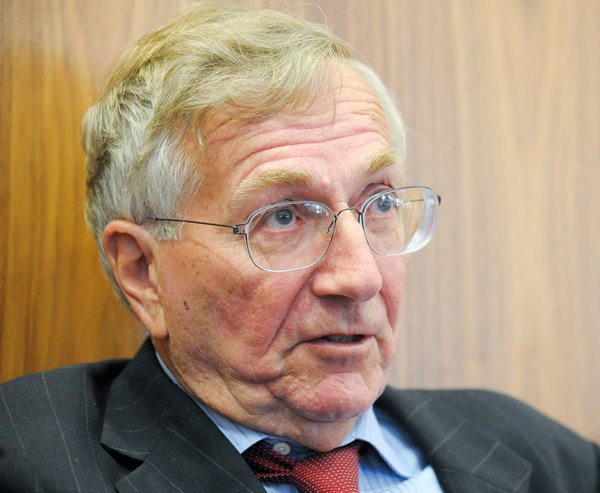The most blatant lie was that Pakistan’s two most senior military leaders – General Ashfaq Parvez Kayani, chief of the army staff, and General Ahmed Shuja Pasha, director general of the ISI – were never informed of the US mission. This remains the White House position despite an array of reports that have raised questions, including one by Carlotta Gall in the New York Times Magazine of 19 March 2014. Gall, who spent 12 years as the Times correspondent in Afghanistan, wrote that she’d been told by a ‘Pakistani official’ that Pasha had known before the raid that bin Laden was in Abbottabad. The story was denied by US and Pakistani officials, and went no further. In his book Pakistan: Before and after Osama (2012), Imtiaz Gul, executive director of the Centre for Research and Security Studies, a think tank in Islamabad, wrote that he’d spoken to four undercover intelligence officers who – reflecting a widely held local view – asserted that the Pakistani military must have had knowledge of the operation. The issue was raised again in February, when a retired general, Asad Durrani, who was head of the ISI in the early 1990s, told an al-Jazeera interviewer that it was ‘quite possible’ that the senior officers of the ISI did not know where bin Laden had been hiding, ‘but it was more probable that they did [know]. And the idea was that, at the right time, his location would be revealed. And the right time would have been when you can get the necessary quid pro quo – if you have someone like Osama bin Laden, you are not going to simply hand him over to the United States.’
This spring I contacted Durrani and told him in detail what I had learned about the bin Laden assault from American sources: that bin Laden had been a prisoner of the ISI at the Abbottabad compound since 2006; that Kayani and Pasha knew of the raid in advance and had made sure that the two helicopters delivering the Seals to Abbottabad could cross Pakistani airspace without triggering any alarms; that the CIA did not learn of bin Laden’s whereabouts by tracking his couriers, as the White House has claimed since May 2011, but from a former senior Pakistani intelligence officer who betrayed the secret in return for much of the $25 million reward offered by the US, and that, while Obama did order the raid and the Seal team did carry it out, many other aspects of the administration’s account were false.
‘When your version comes out – if you do it – people in Pakistan will be tremendously grateful,’ Durrani told me. ‘For a long time people have stopped trusting what comes out about bin Laden from the official mouths. There will be some negative political comment and some anger, but people like to be told the truth, and what you’ve told me is essentially what I have heard from former colleagues who have been on a fact-finding mission since this episode.’ As a former ISI head, he said, he had been told shortly after the raid by ‘people in the “strategic community” who would know’ that there had been an informant who had alerted the US to bin Laden’s presence in Abbottabad, and that after his killing the US’s betrayed promises left Kayani and Pasha exposed.
The major US source for the account that follows is a retired senior intelligence official who was knowledgeable about the initial intelligence about bin Laden’s presence in Abbottabad. He also was privy to many aspects of the Seals’ training for the raid, and to the various after-action reports. Two other US sources, who had access to corroborating information, have been longtime consultants to the Special Operations Command. I also received information from inside Pakistan about widespread dismay among the senior ISI and military leadership – echoed later by Durrani – over Obama’s decision to go public immediately with news of bin Laden’s death. The White House did not respond to requests for comment.
*
It began with a walk-in. In August 2010 a former senior Pakistani intelligence officer [Brigadier Usman Khalid] approached Jonathan Bank, then the CIA’s station chief at the US embassy in Islamabad. He offered to tell the CIA where to find bin Laden in return for the reward that Washington had offered in 2001. Walk-ins are assumed by the CIA to be unreliable, and the response from the agency’s headquarters was to fly in a polygraph team. The walk-in passed the test. ‘So now we’ve got a lead on bin Laden living in a compound in Abbottabad, but how do we really know who it is?’ was the CIA’s worry at the time, the retired senior US intelligence official told me.
The US initially kept what it knew from the Pakistanis. ‘The fear was that if the existence of the source was made known, the Pakistanis themselves would move bin Laden to another location. So only a very small number of people were read into the source and his story,’ the retired official said. ‘The CIA’s first goal was to check out the quality of the informant’s information.’ The compound was put under satellite surveillance. The CIA rented a house in Abbottabad to use as a forward observation base and staffed it with Pakistani employees and foreign nationals. Later on, the base would serve as a contact point with the ISI; it attracted little attention because Abbottabad is a holiday spot full of houses rented on short leases. A psychological profile of the informant was prepared. (The informant and his family were smuggled out of Pakistan and relocated in the Washington area. He is now a consultant for the CIA.)
‘By October the military and intelligence community were discussing the possible military options. Do we drop a bunker buster on the compound or take him out with a drone strike? Perhaps send someone to kill him, single assassin style? But then we’d have no proof of who he was,’ the retired official said. ‘We could see some guy is walking around at night, but we have no intercepts because there’s no commo coming from the compound.’
In October, Obama was briefed on the intelligence. His response was cautious, the retired official said. ‘It just made no sense that bin Laden was living in Abbottabad. It was just too crazy. The president’s position was emphatic: “Don’t talk to me about this any more unless you have proof that it really is bin Laden.”’ The immediate goal of the CIA leadership and the Joint Special Operations Command was to get Obama’s support. They believed they would get this if they got DNA evidence, and if they could assure him that a night assault of the compound would carry no risk. The only way to accomplish both things, the retired official said, ‘was to get the Pakistanis on board’.
During the late autumn of 2010, the US continued to keep quiet about the walk-in, and Kayani and Pasha continued to insist to their American counterparts that they had no information about bin Laden’s whereabouts. ‘The next step was to figure out how to ease Kayani and Pasha into it – to tell them that we’ve got intelligence showing that there is a high-value target in the compound, and to ask them what they know about the target,’ the retired official said. ‘The compound was not an armed enclave – no machine guns around, because it was under ISI control.’ The walk-in had told the US that bin Laden had lived undetected from 2001 to 2006 with some of his wives and children in the Hindu Kush mountains, and that ‘the ISI got to him by paying some of the local tribal people to betray him.’ (Reports after the raid placed him elsewhere in Pakistan during this period.) Bank was also told by the walk-in that bin Laden was very ill, and that early on in his confinement at Abbottabad, the ISI had ordered Amir Aziz, a doctor and a major in the Pakistani army, to move nearby to provide treatment. ‘The truth is that bin Laden was an invalid, but we cannot say that,’ the retired official said. ‘“You mean you guys shot a cripple? Who was about to grab his AK-47?”’
‘It didn’t take long to get the co-operation we needed, because the Pakistanis wanted to ensure the continued release of American military aid, a good percentage of which was anti-terrorism funding that finances personal security, such as bullet-proof limousines and security guards and housing for the ISI leadership,’ the retired official said. He added that there were also under-the-table personal ‘incentives’ that were financed by off-the-books Pentagon contingency funds. ‘The intelligence community knew what the Pakistanis needed to agree – there was the carrot. And they chose the carrot. It was a win-win. We also did a little blackmail. We told them we would leak the fact that you’ve got bin Laden in your backyard. We knew their friends and enemies’ – the Taliban and jihadist groups in Pakistan and Afghanistan – ‘would not like it.’
A worrying factor at this early point, according to the retired official, was Saudi Arabia, which had been financing bin Laden’s upkeep since his seizure by the Pakistanis. ‘The Saudis didn’t want bin Laden’s presence revealed to us because he was a Saudi, and so they told the Pakistanis to keep him out of the picture. The Saudis feared if we knew we would pressure the Pakistanis to let bin Laden start talking to us about what the Saudis had been doing with al-Qaida. And they were dropping money – lots of it. The Pakistanis, in turn, were concerned that the Saudis might spill the beans about their control of bin Laden. The fear was that if the US found out about bin Laden from Riyadh, all hell would break out. The Americans learning about bin Laden’s imprisonment from a walk-in was not the worst thing.’
Despite their constant public feuding, American and Pakistani military and intelligence services have worked together closely for decades on counterterrorism in South Asia. Both services often find it useful to engage in public feuds ‘to cover their asses’, as the retired official put it, but they continually share intelligence used for drone attacks, and co-operate on covert operations. At the same time, it’s understood in Washington that elements of the ISI believe that maintaining a relationship with the Taliban leadership inside Afghanistan is essential to national security. The ISI’s strategic aim is to balance Indian influence in Kabul; the Taliban is also seen in Pakistan as a source of jihadist shock troops who would back Pakistan against India in a confrontation over Kashmir.
Adding to the tension was the Pakistani nuclear arsenal, often depicted in the Western press as an ‘Islamic bomb’ that might be transferred by Pakistan to an embattled nation in the Middle East in the event of a crisis with Israel. The US looked the other way when Pakistan began building its weapons system in the 1970s and it’s widely believed it now has more than a hundred nuclear warheads. It’s understood in Washington that US security depends on the maintenance of strong military and intelligence ties to Pakistan. The belief is mirrored in Pakistan.
‘The Pakistani army sees itself as family,’ the retired official said. ‘Officers call soldiers their sons and all officers are “brothers”. The attitude is different in the American military. The senior Pakistani officers believe they are the elite and have got to look out for all of the people, as keepers of the flame against Muslim fundamentalism. The Pakistanis also know that their trump card against aggression from India is a strong relationship with the United States. They will never cut their person-to-person ties with us.’
Like all CIA station chiefs, Bank was working undercover, but that ended in early December 2010 when he was publicly accused of murder in a criminal complaint filed in Islamabad by Karim Khan, a Pakistani journalist whose son and brother, according to local news reports, had been killed by a US drone strike. Allowing Bank to be named was a violation of diplomatic protocol on the part of the Pakistani authorities, and it brought a wave of unwanted publicity. Bank was ordered to leave Pakistan by the CIA, whose officials subsequently told the Associated Press he was transferred because of concerns for his safety. The New York Times reported that there was ‘strong suspicion’ the ISI had played a role in leaking Bank’s name to Khan. There was speculation that he was outed as payback for the publication in a New York lawsuit a month earlier of the names of ISI chiefs in connection with the Mumbai terrorist attacks of 2008. But there was a collateral reason, the retired official said, for the CIA’s willingness to send Bank back to America. The Pakistanis needed cover in case their co-operation with the Americans in getting rid of bin Laden became known. The Pakistanis could say: “You’re talking about me? We just kicked out your station chief.”’
*
The bin Laden compound was less than two miles from the Pakistan Military Academy, and a Pakistani army combat battalion headquarters was another mile or so away. Abbottabad is less than 15 minutes by helicopter from Tarbela Ghazi, an important base for ISI covert operations and the facility where those who guard Pakistan’s nuclear weapons arsenal are trained. ‘Ghazi is why the ISI put bin Laden in Abbottabad in the first place,’ the retired official said, ‘to keep him under constant supervision.’
The risks for Obama were high at this early stage, especially because there was a troubling precedent: the failed 1980 attempt to rescue the American hostages in Tehran. That failure was a factor in Jimmy Carter’s loss to Ronald Reagan. Obama’s worries were realistic, the retired official said. ‘Was bin Laden ever there? Was the whole story a product of Pakistani deception? What about political blowback in case of failure?’ After all, as the retired official said, ‘If the mission fails, Obama’s just a black Jimmy Carter and it’s all over for re-election.’
Obama was anxious for reassurance that the US was going to get the right man. The proof was to come in the form of bin Laden’s DNA. The planners turned for help to Kayani and Pasha, who asked Aziz to obtain the specimens. Soon after the raid the press found out that Aziz had been living in a house near the bin Laden compound: local reporters discovered his name in Urdu on a plate on the door. Pakistani officials denied that Aziz had any connection to bin Laden, but the retired official told me that Aziz had been rewarded with a share of the $25 million reward the US had put up because the DNA sample had showed conclusively that it was bin Laden in Abbottabad. (In his subsequent testimony to a Pakistani commission investigating the bin Laden raid, Aziz said that he had witnessed the attack on Abbottabad, but had no knowledge of who was living in the compound and had been ordered by a superior officer to stay away from the scene.)
Bargaining continued over the way the mission would be executed. ‘Kayani eventually tells us yes, but he says you can’t have a big strike force. You have to come in lean and mean. And you have to kill him, or there is no deal,’ the retired official said. The agreement was struck by the end of January 2011, and Joint Special Operations Command prepared a list of questions to be answered by the Pakistanis: ‘How can we be assured of no outside intervention? What are the defences inside the compound and its exact dimensions? Where are bin Laden’s rooms and exactly how big are they? How many steps in the stairway? Where are the doors to his rooms, and are they reinforced with steel? How thick?’ The Pakistanis agreed to permit a four-man American cell – a Navy Seal, a CIA case officer and two communications specialists – to set up a liaison office at Tarbela Ghazi for the coming assault. By then, the military had constructed a mock-up of the compound in Abbottabad at a secret former nuclear test site in Nevada, and an elite Seal team had begun rehearsing for the attack.
The US had begun to cut back on aid to Pakistan – to ‘turn off the spigot’, in the retired official’s words. The provision of 18 new F-16 fighter aircraft was delayed, and under-the-table cash payments to the senior leaders were suspended. In April 2011 Pasha met the CIA director, Leon Panetta, at agency headquarters. ‘Pasha got a commitment that the United States would turn the money back on, and we got a guarantee that there would be no Pakistani opposition during the mission,’ the retired official said. ‘Pasha also insisted that Washington stop complaining about Pakistan’s lack of co-operation with the American war on terrorism.’ At one point that spring, Pasha offered the Americans a blunt explanation of the reason Pakistan kept bin Laden’s capture a secret, and why it was imperative for the ISI role to remain secret: ‘We needed a hostage to keep tabs on al-Qaida and the Taliban,’ Pasha said, according to the retired official. ‘The ISI was using bin Laden as leverage against Taliban and al-Qaida activities inside Afghanistan and Pakistan. They let the Taliban and al-Qaida leadership know that if they ran operations that clashed with the interests of the ISI, they would turn bin Laden over to us. So if it became known that the Pakistanis had worked with us to get bin Laden at Abbottabad, there would be hell to pay.’
At one of his meetings with Panetta, according to the retired official and a source within the CIA, Pasha was asked by a senior CIA official whether he saw himself as acting in essence as an agent for al-Qaida and the Taliban. ‘He answered no, but said the ISI needed to have some control.’ The message, as the CIA saw it, according to the retired official, was that Kayani and Pasha viewed bin Laden ‘as a resource, and they were more interested in their [own] survival than they were in the United States’.
A Pakistani with close ties to the senior leadership of the ISI told me that ‘there was a deal with your top guys. We were very reluctant, but it had to be done – not because of personal enrichment, but because all of the American aid programmes would be cut off. Your guys said we will starve you out if you don’t do it, and the okay was given while Pasha was in Washington. The deal was not only to keep the taps open, but Pasha was told there would be more goodies for us.’ The Pakistani said that Pasha’s visit also resulted in a commitment from the US to give Pakistan ‘a freer hand’ in Afghanistan as it began its military draw-down there. ‘And so our top dogs justified the deal by saying this is for our country.’
*
Pasha and Kayani were responsible for ensuring that Pakistan’s army and air defence command would not track or engage with the US helicopters used on the mission. The American cell at Tarbela Ghazi was charged with co-ordinating communications between the ISI, the senior US officers at their command post in Afghanistan, and the two Black Hawk helicopters; the goal was to ensure that no stray Pakistani fighter plane on border patrol spotted the intruders and took action to stop them. The initial plan said that news of the raid shouldn’t be announced straightaway. All units in the Joint Special Operations Command operate under stringent secrecy and the JSOC leadership believed, as did Kayani and Pasha, that the killing of bin Laden would not be made public for as long as seven days, maybe longer. Then a carefully constructed cover story would be issued: Obama would announce that DNA analysis confirmed that bin Laden had been killed in a drone raid in the Hindu Kush, on Afghanistan’s side of the border. The Americans who planned the mission assured Kayani and Pasha that their co-operation would never be made public. It was understood by all that if the Pakistani role became known, there would be violent protests – bin Laden was considered a hero by many Pakistanis – and Pasha and Kayani and their families would be in danger, and the Pakistani army publicly disgraced.
It was clear to all by this point, the retired official said, that bin Laden would not survive: ‘Pasha told us at a meeting in April that he could not risk leaving bin Laden in the compound now that we know he’s there. Too many people in the Pakistani chain of command know about the mission. He and Kayani had to tell the whole story to the directors of the air defence command and to a few local commanders.
‘Of course the guys knew the target was bin Laden and he was there under Pakistani control,’ the retired official said. ‘Otherwise, they would not have done the mission without air cover. It was clearly and absolutely a premeditated murder.’ A former Seal commander, who has led and participated in dozens of similar missions over the past decade, assured me that ‘we were not going to keep bin Laden alive – to allow the terrorist to live. By law, we know what we’re doing inside Pakistan is a homicide. We’ve come to grips with that. Each one of us, when we do these missions, say to ourselves, “Let’s face it. We’re going to commit a murder.”’ The White House’s initial account claimed that bin Laden had been brandishing a weapon; the story was aimed at deflecting those who questioned the legality of the US administration’s targeted assassination programme. The US has consistently maintained, despite widely reported remarks by people involved with the mission, that bin Laden would have been taken alive if he had immediately surrendered.
*
At the Abbottabad compound ISI guards were posted around the clock to keep watch over bin Laden and his wives and children. They were under orders to leave as soon as they heard the rotors of the US helicopters. The town was dark: the electricity supply had been cut off on the orders of the ISI hours before the raid began. One of the Black Hawks crashed inside the walls of the compound, injuring many on board. ‘The guys knew the TOT [time on target] had to be tight because they would wake up the whole town going in,’ the retired official said. The cockpit of the crashed Black Hawk, with its communication and navigational gear, had to be destroyed by concussion grenades, and this would create a series of explosions and a fire visible for miles. Two Chinook helicopters had flown from Afghanistan to a nearby Pakistani intelligence base to provide logistical support, and one of them was immediately dispatched to Abbottabad. But because the helicopter had been equipped with a bladder loaded with extra fuel for the two Black Hawks, it first had to be reconfigured as a troop carrier. The crash of the Black Hawk and the need to fly in a replacement were nerve-wracking and time-consuming setbacks, but the Seals continued with their mission. There was no firefight as they moved into the compound; the ISI guards had gone. ‘Everyone in Pakistan has a gun and high-profile, wealthy folks like those who live in Abbottabad have armed bodyguards, and yet there were no weapons in the compound,’ the retired official pointed out. Had there been any opposition, the team would have been highly vulnerable. Instead, the retired official said, an ISI liaison officer flying with the Seals guided them into the darkened house and up a staircase to bin Laden’s quarters. The Seals had been warned by the Pakistanis that heavy steel doors blocked the stairwell on the first and second-floor landings; bin Laden’s rooms were on the third floor. The Seal squad used explosives to blow the doors open, without injuring anyone. One of bin Laden’s wives was screaming hysterically and a bullet – perhaps a stray round – struck her knee. Aside from those that hit bin Laden, no other shots were fired. (The Obama administration’s account would hold otherwise.)
‘They knew where the target was – third floor, second door on the right,’ the retired official said. ‘Go straight there. Osama was cowering and retreated into the bedroom. Two shooters followed him and opened up. Very simple, very straightforward, very professional hit.’ Some of the Seals were appalled later at the White House’s initial insistence that they had shot bin Laden in self-defence, the retired official said. ‘Six of the Seals’ finest, most experienced NCOs, faced with an unarmed elderly civilian, had to kill him in self-defence? The house was shabby and bin Laden was living in a cell with bars on the window and barbed wire on the roof. The rules of engagement were that if bin Laden put up any opposition they were authorised to take lethal action. But if they suspected he might have some means of opposition, like an explosive vest under his robe, they could also kill him. So here’s this guy in a mystery robe and they shot him. It’s not because he was reaching for a weapon. The rules gave them absolute authority to kill the guy.’ The later White House claim that only one or two bullets were fired into his head was ‘bullshit’, the retired official said. ‘The squad came through the door and obliterated him. As the Seals say, “We kicked his ass and took his gas.”’
After they killed bin Laden, ‘the Seals were just there, some with physical injuries from the crash, waiting for the relief chopper,’ the retired official said. ‘Twenty tense minutes. The Black Hawk is still burning. There are no city lights. No electricity. No police. No fire trucks. They have no prisoners.’ Bin Laden’s wives and children were left for the ISI to interrogate and relocate. ‘Despite all the talk,’ the retired official continued, there were ‘no garbage bags full of computers and storage devices. The guys just stuffed some books and papers they found in his room in their backpacks. The Seals weren’t there because they thought bin Laden was running a command centre for al-Qaida operations, as the White House would later tell the media. And they were not intelligence experts gathering information inside that house.’
On a normal assault mission, the retired official said, there would be no waiting around if a chopper went down. ‘The Seals would have finished the mission, thrown off their guns and gear, and jammed into the remaining Black Hawk and di-di-maued’ – Vietnamese slang for leaving in a rush – ‘out of there, with guys hanging out of the doors. They would not have blown the chopper – no commo gear is worth a dozen lives – unless they knew they were safe. Instead they stood around outside the compound, waiting for the bus to arrive.’ Pasha and Kayani had delivered on all their promises.
*
The backroom argument inside the White House began as soon as it was clear that the mission had succeeded. Bin Laden’s body was presumed to be on its way to Afghanistan. Should Obama stand by the agreement with Kayani and Pasha and pretend a week or so later that bin Laden had been killed in a drone attack in the mountains, or should he go public immediately? The downed helicopter made it easy for Obama’s political advisers to urge the latter plan. The explosion and fireball would be impossible to hide, and word of what had happened was bound to leak. Obama had to ‘get out in front of the story’ before someone in the Pentagon did: waiting would diminish the political impact.
Not everyone agreed. Robert Gates, the secretary of defence, was the most outspoken of those who insisted that the agreements with Pakistan had to be honoured. In his memoir, Duty, Gates did not mask his anger:
Before we broke up and the president headed upstairs to tell the American people what had just happened, I reminded everyone that the techniques, tactics and procedures the Seals had used in the bin Laden operation were used every night in Afghanistan … it was therefore essential that we agree not to release any operational details of the raid. That we killed him, I said, is all we needed to say. Everybody in that room agreed to keep mum on details. That commitment lasted about five hours. The initial leaks came from the White House and CIA. They just couldn’t wait to brag and to claim credit. The facts were often wrong … Nonetheless the information just kept pouring out. I was outraged and at one point, told [the national security adviser, Tom] Donilon, ‘Why doesn’t everybody just shut the fuck up?’ To no avail.
Obama’s speech was put together in a rush, the retired official said, and was viewed by his advisers as a political document, not a message that needed to be submitted for clearance to the national security bureaucracy. This series of self-serving and inaccurate statements would create chaos in the weeks following. Obama said that his administration had discovered that bin Laden was in Pakistan through ‘a possible lead’ the previous August; to many in the CIA the statement suggested a specific event, such as a walk-in. The remark led to a new cover story claiming that the CIA’s brilliant analysts had unmasked a courier network handling bin Laden’s continuing flow of operational orders to al-Qaida. Obama also praised ‘a small team of Americans’ for their care in avoiding civilian deaths and said: ‘After a firefight, they killed Osama bin Laden and took custody of his body.’ Two more details now had to be supplied for the cover story: a description of the firefight that never happened, and a story about what happened to the corpse. Obama went on to praise the Pakistanis: ‘It’s important to note that our counterterrorism co-operation with Pakistan helped lead us to bin Laden and the compound where he was hiding.’ That statement risked exposing Kayani and Pasha. The White House’s solution was to ignore what Obama had said and order anyone talking to the press to insist that the Pakistanis had played no role in killing bin Laden. Obama left the clear impression that he and his advisers hadn’t known for sure that bin Laden was in Abbottabad, but only had information ‘about the possibility’. This led first to the story that the Seals had determined they’d killed the right man by having a six-foot-tall Seal lie next to the corpse for comparison (bin Laden was known to be six foot four); and then to the claim that a DNA test had been performed on the corpse and demonstrated conclusively that the Seals had killed bin Laden. But, according to the retired official, it wasn’t clear from the Seals’ early reports whether all of bin Laden’s body, or any of it, made it back to Afghanistan.
Gates wasn’t the only official who was distressed by Obama’s decision to speak without clearing his remarks in advance, the retired official said, ‘but he was the only one protesting. Obama didn’t just double-cross Gates, he double-crossed everyone. This was not the fog of war. The fact that there was an agreement with the Pakistanis and no contingency analysis of what was to be disclosed if something went wrong – that wasn’t even discussed. And once it went wrong, they had to make up a new cover story on the fly.’ There was a legitimate reason for some deception: the role of the Pakistani walk-in had to be protected.
The White House press corps was told in a briefing shortly after Obama’s announcement that the death of bin Laden was ‘the culmination of years of careful and highly advanced intelligence work’ that focused on tracking a group of couriers, including one who was known to be close to bin Laden. Reporters were told that a team of specially assembled CIA and National Security Agency analysts had traced the courier to a highly secure million-dollar compound in Abbottabad. After months of observation, the American intelligence community had ‘high confidence’ that a high-value target was living in the compound, and it was ‘assessed that there was a strong probability that [it] was Osama bin Laden’. The US assault team ran into a firefight on entering the compound and three adult males – two of them believed to be the couriers – were slain, along with bin Laden. Asked if bin Laden had defended himself, one of the briefers said yes: ‘He did resist the assault force. And he was killed in a firefight.’
The next day John Brennan, then Obama’s senior adviser for counterterrorism, had the task of talking up Obama’s valour while trying to smooth over the misstatements in his speech. He provided a more detailed but equally misleading account of the raid and its planning. Speaking on the record, which he rarely does, Brennan said that the mission was carried out by a group of Navy Seals who had been instructed to take bin Laden alive, if possible. He said the US had no information suggesting that anyone in the Pakistani government or military knew bin Laden’s whereabouts: ‘We didn’t contact the Pakistanis until after all of our people, all of our aircraft were out of Pakistani airspace.’ He emphasised the courage of Obama’s decision to order the strike, and said that the White House had no information ‘that confirmed that bin Laden was at the compound’ before the raid began. Obama, he said, ‘made what I believe was one of the gutsiest calls of any president in recent memory’. Brennan increased the number killed by the Seals inside the compound to five: bin Laden, a courier, his brother, a bin Laden son, and one of the women said to be shielding bin Laden.
Asked whether bin Laden had fired on the Seals, as some reporters had been told, Brennan repeated what would become a White House mantra: ‘He was engaged in a firefight with those that entered the area of the house he was in. And whether or not he got off any rounds, I quite frankly don’t know … Here is bin Laden, who has been calling for these attacks … living in an area that is far removed from the front, hiding behind women who were put in front of him as a shield … [It] just speaks to I think the nature of the individual he was.’
Gates also objected to the idea, pushed by Brennan and Leon Panetta, that US intelligence had learned of bin Laden’s whereabouts from information acquired by waterboarding and other forms of torture. ‘All of this is going on as the Seals are flying home from their mission. The agency guys know the whole story,’ the retired official said. ‘It was a group of annuitants who did it.’ (Annuitants are retired CIA officers who remain active on contract.) ‘They had been called in by some of the mission planners in the agency to help with the cover story. So the old-timers come in and say why not admit that we got some of the information about bin Laden from enhanced interrogation?’ At the time, there was still talk in Washington about the possible prosecution of CIA agents who had conducted torture.
‘Gates told them this was not going to work,’ the retired official said. ‘He was never on the team. He knew at the eleventh hour of his career not to be a party to this nonsense. But State, the agency and the Pentagon had bought in on the cover story. None of the Seals thought that Obama was going to get on national TV and announce the raid. The Special Forces command was apoplectic. They prided themselves on keeping operational security.’ There was fear in Special Operations, the retired official said, that ‘if the true story of the missions leaked out, the White House bureaucracy was going to blame it on the Seals.’
The White House’s solution was to silence the Seals. On 5 May, every member of the Seal hit team – they had returned to their base in southern Virginia – and some members of the Joint Special Operations Command leadership were presented with a nondisclosure form drafted by the White House’s legal office; it promised civil penalties and a lawsuit for anyone who discussed the mission, in public or private. ‘The Seals were not happy,’ the retired official said. But most of them kept quiet, as did Admiral William McRaven, who was then in charge of JSOC. ‘McRaven was apoplectic. He knew he was fucked by the White House, but he’s a dyed-in-the-wool Seal, and not then a political operator, and he knew there’s no glory in blowing the whistle on the president. When Obama went public with bin Laden’s death, everyone had to scramble around for a new story that made sense, and the planners were stuck holding the bag.’
Within days, some of the early exaggerations and distortions had become obvious and the Pentagon issued a series of clarifying statements. No, bin Laden was not armed when he was shot and killed. And no, bin Laden did not use one of his wives as a shield. The press by and large accepted the explanation that the errors were the inevitable by-product of the White House’s desire to accommodate reporters frantic for details of the mission.
One lie that has endured is that the Seals had to fight their way to their target. Only two Seals have made any public statement: No Easy Day, a first-hand account of the raid by Matt Bissonnette, was published in September 2012; and two years later Rob O’Neill was interviewed by Fox News. Both men had resigned from the navy; both had fired at bin Laden. Their accounts contradicted each other on many details, but their stories generally supported the White House version, especially when it came to the need to kill or be killed as the Seals fought their way to bin Laden. O’Neill even told Fox News that he and his fellow Seals thought ‘We were going to die.’ ‘The more we trained on it, the more we realised … this is going to be a one-way mission.’
But the retired official told me that in their initial debriefings the Seals made no mention of a firefight, or indeed of any opposition. The drama and danger portrayed by Bissonnette and O’Neill met a deep-seated need, the retired official said: ‘Seals cannot live with the fact that they killed bin Laden totally unopposed, and so there has to be an account of their courage in the face of danger. The guys are going to sit around the bar and say it was an easy day? That’s not going to happen.’
There was another reason to claim there had been a firefight inside the compound, the retired official said: to avoid the inevitable question that would arise from an uncontested assault. Where were bin Laden’s guards? Surely, the most sought-after terrorist in the world would have around-the-clock protection. ‘And one of those killed had to be the courier, because he didn’t exist and we couldn’t produce him. The Pakistanis had no choice but to play along with it.’ (Two days after the raid, Reuters published photographs of three dead men that it said it had purchased from an ISI official. Two of the men were later identified by an ISI spokesman as being the alleged courier and his brother.)
*
Five days after the raid the Pentagon press corps was provided with a series of videotapes that were said by US officials to have been taken from a large collection the Seals had removed from the compound, along with as many as 15 computers. Snippets from one of the videos showed a solitary bin Laden looking wan and wrapped in a blanket, watching what appeared to be a video of himself on television. An unnamed official told reporters that the raid produced a ‘treasure trove … the single largest collection of senior terrorist materials ever’, which would provide vital insights into al-Qaida’s plans. The official said the material showed that bin Laden ‘remained an active leader in al-Qaida, providing strategic, operational and tactical instructions to the group … He was far from a figurehead [and] continued to direct even tactical details of the group’s management and to encourage plotting’ from what was described as a command-and-control centre in Abbottabad. ‘He was an active player, making the recent operation even more essential for our nation’s security,’ the official said. The information was so vital, he added, that the administration was setting up an inter-agency task force to process it: ‘He was not simply someone who was penning al-Qaida strategy. He was throwing operational ideas out there and he was also specifically directing other al-Qaida members.’
These claims were fabrications: there wasn’t much activity for bin Laden to exercise command and control over. The retired intelligence official said that the CIA’s internal reporting shows that since bin Laden moved to Abbottabad in 2006 only a handful of terrorist attacks could be linked to the remnants of bin Laden’s al-Qaida. ‘We were told at first,’ the retired official said, ‘that the Seals produced garbage bags of stuff and that the community is generating daily intelligence reports out of this stuff. And then we were told that the community is gathering everything together and needs to translate it. But nothing has come of it. Every single thing they have created turns out not to be true. It’s a great hoax – like the Piltdown man.’ The retired official said that most of the materials from Abbottabad were turned over to the US by the Pakistanis, who later razed the building. The ISI took responsibility for the wives and children of bin Laden, none of whom was made available to the US for questioning.
‘Why create the treasure trove story?’ the retired official said. ‘The White House had to give the impression that bin Laden was still operationally important. Otherwise, why kill him? A cover story was created – that there was a network of couriers coming and going with memory sticks and instructions. All to show that bin Laden remained important.’
In July 2011, the Washington Post published what purported to be a summary of some of these materials. The story’s contradictions were glaring. It said the documents had resulted in more than four hundred intelligence reports within six weeks; it warned of unspecified al-Qaida plots; and it mentioned arrests of suspects ‘who are named or described in emails that bin Laden received’. The Post didn’t identify the suspects or reconcile that detail with the administration’s previous assertions that the Abbottabad compound had no internet connection. Despite their claims that the documents had produced hundreds of reports, the Post also quoted officials saying that their main value wasn’t the actionable intelligence they contained, but that they enabled ‘analysts to construct a more comprehensive portrait of al-Qaida’.
In May 2012, the Combating Terrorism Centre at West Point, a private research group, released translations it had made under a federal government contract of 175 pages of bin Laden documents. Reporters found none of the drama that had been touted in the days after the raid. Patrick Cockburn wrote about the contrast between the administration’s initial claims that bin Laden was the ‘spider at the centre of a conspiratorial web’ and what the translations actually showed: that bin Laden was ‘delusional’ and had ‘limited contact with the outside world outside his compound’.
The retired official disputed the authenticity of the West Point materials: ‘There is no linkage between these documents and the counterterrorism centre at the agency. No intelligence community analysis. When was the last time the CIA: 1) announced it had a significant intelligence find; 2) revealed the source; 3) described the method for processing the materials; 4) revealed the time-line for production; 5) described by whom and where the analysis was taking place, and 6) published the sensitive results before the information had been acted on? No agency professional would support this fairy tale.’
*
In June 2011, it was reported in the New York Times, the Washington Post and all over the Pakistani press that Amir Aziz had been held for questioning in Pakistan; he was, it was said, a CIA informant who had been spying on the comings and goings at the bin Laden compound. Aziz was released, but the retired official said that US intelligence was unable to learn who leaked the highly classified information about his involvement with the mission. Officials in Washington decided they ‘could not take a chance that Aziz’s role in obtaining bin Laden’s DNA also would become known’. A sacrificial lamb was needed, and the one chosen was Shakil Afridi, a 48-year-old Pakistani doctor and sometime CIA asset, who had been arrested by the Pakistanis in late May and accused of assisting the agency. ‘We went to the Pakistanis and said go after Afridi,’ the retired official said. ‘We had to cover the whole issue of how we got the DNA.’ It was soon reported that the CIA had organised a fake vaccination programme in Abbottabad with Afridi’s help in a failed attempt to obtain bin Laden’s DNA. Afridi’s legitimate medical operation was run independently of local health authorities, was well financed and offered free vaccinations against hepatitis B. Posters advertising the programme were displayed throughout the area. Afridi was later accused of treason and sentenced to 33 years in prison because of his ties to an extremist. News of the CIA-sponsored programme created widespread anger in Pakistan, and led to the cancellation of other international vaccination programmes that were now seen as cover for American spying.
The retired official said that Afridi had been recruited long before the bin Laden mission as part of a separate intelligence effort to get information about suspected terrorists in Abbottabad and the surrounding area. ‘The plan was to use vaccinations as a way to get the blood of terrorism suspects in the villages.’ Afridi made no attempt to obtain DNA from the residents of the bin Laden compound. The report that he did so was a hurriedly put together ‘CIA cover story creating “facts”’ in a clumsy attempt to protect Aziz and his real mission. ‘Now we have the consequences,’ the retired official said. ‘A great humanitarian project to do something meaningful for the peasants has been compromised as a cynical hoax.’ Afridi’s conviction was overturned, but he remains in prison on a murder charge.
*
In his address announcing the raid, Obama said that after killing bin Laden the Seals ‘took custody of his body’. The statement created a problem. In the initial plan it was to be announced a week or so after the fact that bin Laden was killed in a drone strike somewhere in the mountains on the Pakistan/Afghanistan border and that his remains had been identified by DNA testing. But with Obama’s announcement of his killing by the Seals everyone now expected a body to be produced. Instead, reporters were told that bin Laden’s body had been flown by the Seals to an American military airfield in Jalalabad, Afghanistan, and then straight to the USS Carl Vinson, a supercarrier on routine patrol in the North Arabian Sea. Bin Laden had then been buried at sea, just hours after his death. The press corps’s only sceptical moments at John Brennan’s briefing on 2 May were to do with the burial. The questions were short, to the point, and rarely answered. ‘When was the decision made that he would be buried at sea if killed?’ ‘Was this part of the plan all along?’ ‘Can you just tell us why that was a good idea?’ ‘John, did you consult a Muslim expert on that?’ ‘Is there a visual recording of this burial?’ When this last question was asked, Jay Carney, Obama’s press secretary, came to Brennan’s rescue: ‘We’ve got to give other people a chance here.’
‘We thought the best way to ensure that his body was given an appropriate Islamic burial,’ Brennan said, ‘was to take those actions that would allow us to do that burial at sea.’ He said ‘appropriate specialists and experts’ were consulted, and that the US military was fully capable of carrying out the burial ‘consistent with Islamic law’. Brennan didn’t mention that Muslim law calls for the burial service to be conducted in the presence of an imam, and there was no suggestion that one happened to be on board the Carl Vinson.
In a reconstruction of the bin Laden operation for Vanity Fair, Mark Bowden, who spoke to many senior administration officials, wrote that bin Laden’s body was cleaned and photographed at Jalalabad. Further procedures necessary for a Muslim burial were performed on the carrier, he wrote, ‘with bin Laden’s body being washed again and wrapped in a white shroud. A navy photographer recorded the burial in full sunlight, Monday morning, May 2.’ Bowden described the photos:
One frame shows the body wrapped in a weighted shroud. The next shows it lying diagonally on a chute, feet overboard. In the next frame the body is hitting the water. In the next it is visible just below the surface, ripples spreading outward. In the last frame there are only circular ripples on the surface. The mortal remains of Osama bin Laden were gone for good.
Bowden was careful not to claim that he had actually seen the photographs he described, and he recently told me he hadn’t seen them: ‘I’m always disappointed when I can’t look at something myself, but I spoke with someone I trusted who said he had seen them himself and described them in detail.’ Bowden’s statement adds to the questions about the alleged burial at sea, which has provoked a flood of Freedom of Information Act requests, most of which produced no information. One of them sought access to the photographs. The Pentagon responded that a search of all available records had found no evidence that any photographs had been taken of the burial. Requests on other issues related to the raid were equally unproductive. The reason for the lack of response became clear after the Pentagon held an inquiry into allegations that the Obama administration had provided access to classified materials to the makers of the film Zero Dark Thirty. The Pentagon report, which was put online in June 2013, noted that Admiral McRaven had ordered the files on the raid to be deleted from all military computers and moved to the CIA, where they would be shielded from FOIA requests by the agency’s ‘operational exemption’.
McRaven’s action meant that outsiders could not get access to the Carl Vinson’s unclassified logs. Logs are sacrosanct in the navy, and separate ones are kept for air operations, the deck, the engineering department, the medical office, and for command information and control. They show the sequence of events day by day aboard the ship; if there has been a burial at sea aboard the Carl Vinson, it would have been recorded.
There wasn’t any gossip about a burial among the Carl Vinson’s sailors. The carrier concluded its six-month deployment in June 2011. When the ship docked at its home base in Coronado, California, Rear Admiral Samuel Perez, commander of the Carl Vinson carrier strike group, told reporters that the crew had been ordered not to talk about the burial. Captain Bruce Lindsey, skipper of the Carl Vinson, told reporters he was unable to discuss it. Cameron Short, one of the crew of the Carl Vinson, told theCommercial-News of Danville, Illinois, that the crew had not been told anything about the burial. ‘All he knows is what he’s seen on the news,’ the newspaper reported.
The Pentagon did release a series of emails to the Associated Press. In one of them, Rear Admiral Charles Gaouette reported that the service followed ‘traditional procedures for Islamic burial’, and said none of the sailors on board had been permitted to observe the proceedings. But there was no indication of who washed and wrapped the body, or of which Arabic speaker conducted the service.
Within weeks of the raid, I had been told by two longtime consultants to Special Operations Command, who have access to current intelligence, that the funeral aboard the Carl Vinson didn’t take place. One consultant told me that bin Laden’s remains were photographed and identified after being flown back to Afghanistan. The consultant added: ‘At that point, the CIA took control of the body. The cover story was that it had been flown to the Carl Vinson.’ The second consultant agreed that there had been ‘no burial at sea’. He added that ‘the killing of bin Laden was political theatre designed to burnish Obama’s military credentials … The Seals should have expected the political grandstanding. It’s irresistible to a politician. Bin Laden became a working asset.’ Early this year, speaking again to the second consultant, I returned to the burial at sea. The consultant laughed and said: ‘You mean, he didn’t make it to the water?’
The retired official said there had been another complication: some members of the Seal team had bragged to colleagues and others that they had torn bin Laden’s body to pieces with rifle fire. The remains, including his head, which had only a few bullet holes in it, were thrown into a body bag and, during the helicopter flight back to Jalalabad, some body parts were tossed out over the Hindu Kush mountains – or so the Seals claimed. At the time, the retired official said, the Seals did not think their mission would be made public by Obama within a few hours: ‘If the president had gone ahead with the cover story, there would have been no need to have a funeral within hours of the killing. Once the cover story was blown, and the death was made public, the White House had a serious “Where’s the body?” problem. The world knew US forces had killed bin Laden in Abbottabad. Panic city. What to do? We need a “functional body” because we have to be able to say we identified bin Laden via a DNA analysis. It would be navy officers who came up with the “burial at sea” idea. Perfect. No body. Honourable burial following sharia law. Burial is made public in great detail, but Freedom of Information documents confirming the burial are denied for reasons of “national security”. It’s the classic unravelling of a poorly constructed cover story – it solves an immediate problem but, given the slightest inspection, there is no back-up support. There never was a plan, initially, to take the body to sea, and no burial of bin Laden at sea took place.’ The retired official said that if the Seals’ first accounts are to be believed, there wouldn’t have been much left of bin Laden to put into the sea in any case.
*
It was inevitable that the Obama administration’s lies, misstatements and betrayals would create a backlash. ‘We’ve had a four-year lapse in co-operation,’ the retired official said. ‘It’s taken that long for the Pakistanis to trust us again in the military-to-military counterterrorism relationship – while terrorism was rising all over the world … They felt Obama sold them down the river. They’re just now coming back because the threat from Isis, which is now showing up there, is a lot greater and the bin Laden event is far enough away to enable someone like General Durrani to come out and talk about it.’ Generals Pasha and Kayani have retired and both are reported to be under investigation for corruption during their time in office.
The Senate Intelligence Committee’s long-delayed report on CIA torture, released last December, documented repeated instances of official lying, and suggested that the CIA’s knowledge of bin Laden’s courier was sketchy at best and predated its use of waterboarding and other forms of torture. The report led to international headlines about brutality and waterboarding, along with gruesome details about rectal feeding tubes, ice baths and threats to rape or murder family members of detainees who were believed to be withholding information. Despite the bad publicity, the report was a victory for the CIA. Its major finding – that the use of torture didn’t lead to discovering the truth – had already been the subject of public debate for more than a decade. Another key finding – that the torture conducted was more brutal than Congress had been told – was risible, given the extent of public reporting and published exposés by former interrogators and retired CIA officers. The report depicted tortures that were obviously contrary to international law as violations of rules or ‘inappropriate activities’ or, in some cases, ‘management failures’. Whether the actions described constitute war crimes was not discussed, and the report did not suggest that any of the CIA interrogators or their superiors should be investigated for criminal activity. The agency faced no meaningful consequences as a result of the report.
The retired official told me that the CIA leadership had become experts in derailing serious threats from Congress: ‘They create something that is horrible but not that bad. Give them something that sounds terrible. “Oh my God, we were shoving food up a prisoner’s ass!” Meanwhile, they’re not telling the committee about murders, other war crimes, and secret prisons like we still have in Diego Garcia. The goal also was to stall it as long as possible, which they did.’
The main theme of the committee’s 499-page executive summary is that the CIA lied systematically about the effectiveness of its torture programme in gaining intelligence that would stop future terrorist attacks in the US. The lies included some vital details about the uncovering of an al-Qaida operative called Abu Ahmed al-Kuwaiti, who was said to be the key al-Qaida courier, and the subsequent tracking of him to Abbottabad in early 2011. The agency’s alleged intelligence, patience and skill in finding al-Kuwaiti became legend after it was dramatised in Zero Dark Thirty.
The Senate report repeatedly raised questions about the quality and reliability of the CIA’s intelligence about al-Kuwaiti. In 2005 an internal CIA report on the hunt for bin Laden noted that ‘detainees provide few actionable leads, and we have to consider the possibility that they are creating fictitious characters to distract us or to absolve themselves of direct knowledge about bin Ladin [sic].’ A CIA cable a year later stated that ‘we have had no success in eliciting actionable intelligence on bin Laden’s location from any detainees.’ The report also highlighted several instances of CIA officers, including Panetta, making false statements to Congress and the public about the value of ‘enhanced interrogation techniques’ in the search for bin Laden’s couriers.
Obama today is not facing re-election as he was in the spring of 2011. His principled stand on behalf of the proposed nuclear agreement with Iran says much, as does his decision to operate without the support of the conservative Republicans in Congress. High-level lying nevertheless remains the modus operandi of US policy, along with secret prisons, drone attacks, Special Forces night raids, bypassing the chain of command, and cutting out those who might say no.
